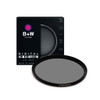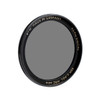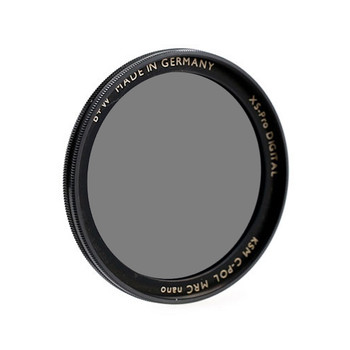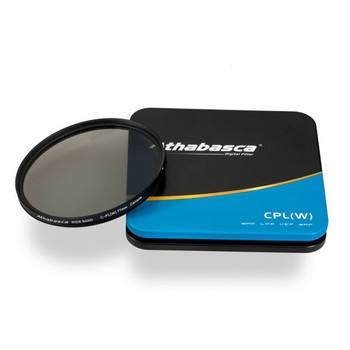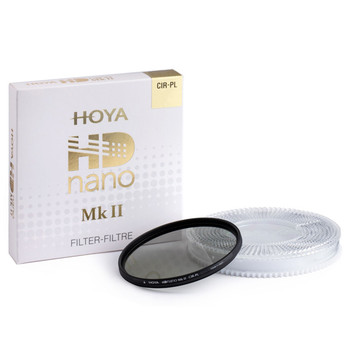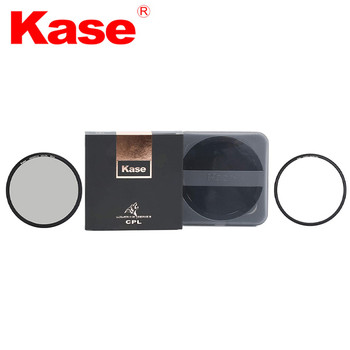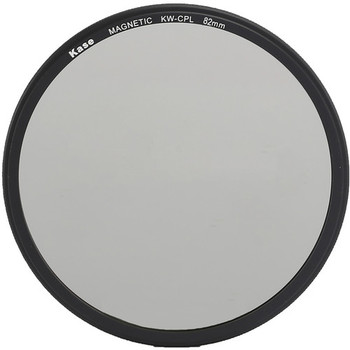B+W Filters
B+W 67mm XS-KSM HTCM MRC2 CPL Nano Circular Polarising Filter High Transmission #1081476

- SKU:
- Bw1081476
- UPC:
- Bw1081476
- Shipping:
- Calculated at Checkout
Description
The B+W 67mm HTC Kaesemann XS-Pro Circular Polarizer MRC Nano Filter helps to reduce reflections and glare by filtering out light that has become polarized due to reflection from a non-metallic surface. This results in a noticeable increase in the saturation of skies and foliage, as well as clearer imagery when photographing in hazy conditions. A circular polarizer differs from a linear polarizer in that it supports full use of a camera's autofocus and auto exposure functions.
Kaesemann-type filters feature greater optical efficiency than regular polarizing foils and are more neutral in color. The polarizing foils are cemented between plano-parallel optical glass layers, which are then precision-polished to achieve the most accurate plano-parallel surface. This edge sealing protects the filter layers from humidity and are ideal for use with high-speed telephoto and apochromatic lenses.
Due to their improved light transmission, the new Kasemann high-transmission polarizing filters HTC absorb less light to achieve a brighter viewfinder image. As less light is lost, faster shutter speeds are possible. Circular polarizing filters increase the purity of colors and improve color saturation. They can be rotated in the mount so that the polarization effect can be visibly controlled in the viewfinder or on the display. Polarizing filters usually have a filter factor of between 4 and 8, equivalent to 3 f-stops. The B+W Käsemann high-transmission polarizing filters have a filter factor of 2 to 3, equivalent to 1 to 1.5 f-stops. The new polarizing filters have a circular design, making them suitable for all camera systems with a built-in light meter and AF systems.
The Multi-Resistant Coating (MRC) is both an anti-reflection coating as well as a protective surface. It helps to increase light transmission by reducing reflections, scattered light, and ghosting. Additionally, it offers greater protection to the filter substrate and stays cleaner for longer than uncoated filters. The Nano coating associated with XS-Pro filters incorporates an additional 8th layer over the regular MRC and results in a better beading effect with water for greater cleaning efficiency.
B+W filters are constructed from high quality Schott glass for increased optical clarity and color fidelity. This filter features the XS-Pro Digital mount which is specifically designed for DSLR use with wide angle and zoom lenses. The filter ring is made from brass for durability as well as jamming prevention.
- Reduce reflections and glare by filtering out light that has become polarized due to reflection from a non-metallic surface.
- Arrange and filter directionally polarized light perpendicularly to the reflected light allowing for the absorption of much of the light.
- Lessens haze in distant landscapes and provides more saturated, vivid colors.
- Strongest effect when used at a 90° from the sun.
- Kaesemann polarizing foils provide highly neutral coloring and higher image quality than conventional polarizing foils.
- Multi-Resistant Coating offers both protection to the glass and helps to improve light transmission and image quality.
- Nano coating promotes a better beading effect with water for more efficient cleaning.
- Constructed from high-quality Schott glass for optical clarity.
- Brass filter ring helps to prevent jamming and provides additional strength.
- This filter ring's outside diameter is slightly larger than the actual thread size, and because of this you may be unable to attach the lens manufacturer's bayonet-mounted lens hood to the lens while using this filter. This is dependent on your specific lens and how thick the front rim of the lens is; with thinner, low-profile lenses usually being affected more.



